These resources are to support children in guided or independent work. Roll over the highlighted resources for a description.
Consolidation and practice
Symmetry
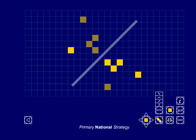
This interactive teaching program (ITP) is an ICT-based tool to support the exploration of shape and space. Symmetry ITP allows the child or teacher to represent and reflect shapes on a grid. An image of the original shape can be fixed to explore the effect on the reflection of moving towards, away from and along the mirror line.
Coordinates
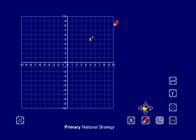
This interactive teaching program (ITP) is an ICT-based tool to support the exploration of coordinates. Coordinates ITP allows the child or teacher to use a marker to identify the coordinates of points on different grids, mark points and draw lines and shapes, working in one, two or four quadrants to introduce both positive and negative coordinates. The ITP can also be used to explore the properties of 2-D shapes and to predict translations, rotations and reflections of various shapes in the different quadrants.
Polygon
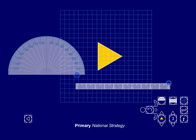
This interactive teaching program (ITP) is an ICT-based tool to support the exploration of shape, space and measure. Polygon ITP allows the child or teacher to represent regular polygons with three to ten sides. The ITP can then be used to explore the properties of regular and irregular shapes by dragging vertices and creating additional vertices. The ITP includes an on-screen protractor and ruler.
Fixing points
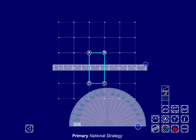
This interactive teaching program (ITP) is an ICT-based tool to support the exploration of shape and space. Fixing points ITP allows the child or teacher to create one or more shapes by connecting a number of vertices on a grid. Angles can be estimated and measured, and the effect of moving different vertices can be explored.
Isometric grid
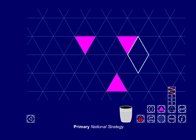
This interactive teaching program (ITP) is an ICT-based tool to support the exploration of shape and space. Isometric grid ITP allows the child or teacher to display equilateral triangles. The grid can be hidden or become an isometric pin board. An 'elastic band' can be stretched around the pins to create outlines. Rhombuses can be selected and dragged to different positions on the grid, and then locked together to form representations of 3-D shapes.
Area
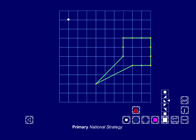
The Area interactive teaching program (ITP) is an ICT-based tool to support the exploration of number, shape and space and problem solving. Area ITP (version 2.2) allows the child or teacher to place counters or colour in whole or part cells on a grid, pinboard or blank screen, or to define a shape using a rubber band.
Opportunities to use and apply
Possible contexts include:
- Art, e.g. Produce wrapping paper designs using reflection, rotation and translation of shapes; Create Rothko-like pictures by translating rectangles; Translate patterns through block printing.
- ICT, e.g. Use draw packages to design a pattern involving rotation, reflection or translation of shapes; use the repeat command in drawing software to produce a pattern and then produce translated versions.
- Everyday objects, e.g. Identify objects that would map onto themselves exactly when reflected or rotated.
- Coordinates, e.g. Find the coordinates of vertices of shapes after reflections, rotations and translations.
Confirming learning
Ask probing questions such as:
-
Decide whether you would use a reflection, rotation or translation or combination of these to turn the pink shape into the:
- yellow shape
- green shape
- white shape
Describe each transformation. Are there different possibilities?
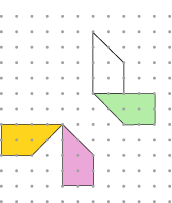
- Point a is reflected in the line shown. Is it reflected onto point b, c or d? Explain how you know. Draw the original points for the other two reflected coordinates.
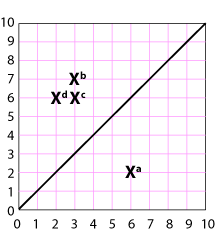
- Using dotty paper, draw an equilateral triangle. Rotate it through 60° clockwise about one of its vertices. What shape is formed by the two triangles together?
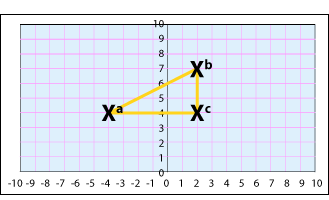
 Understanding shape
Understanding shape







